This guide will walk you through practical, real-world strategies to manage your baby budget effectively, from pregnancy planning through the first year and beyond. We’ll help you distinguish between must-haves and nice-to-haves, find the best deals, and make choices that work for both your baby and your bank account.
Creating Your Baby Budget Before Baby Arrives
Planning your baby budget early helps avoid financial surprises later.
The first step to managing baby expenses is creating a realistic budget before your little one arrives. Start by breaking down costs into one-time purchases and recurring monthly expenses.
One-Time Baby Expenses
- Nursery furniture (crib, changing table, dresser)
- Car seat and stroller
- Initial clothing supply
- Baby gear (swing, bouncer, play mat)
- Medical costs for delivery (insurance deductibles, copays)
Monthly Recurring Expenses
- Diapers and wipes ($70-$80 per month)
- Formula (if not breastfeeding, $150+ per month)
- Child care ($1,000-$2,000+ per month depending on location)
- Baby food (when starting solids)
- Clothing (as baby grows)
- Healthcare costs (copays for sick visits)
Start Your Baby Budget Today
Create a personalized baby budget with our free downloadable template. Track all your expected expenses in one place and identify areas to save.
Plan for the Unexpected
Even the most detailed budget can’t anticipate everything. Set aside an additional 10-15% of your total budget for unexpected expenses. These might include extra medical visits, specialized formula if your baby has allergies, or replacing items that don’t work for your baby’s preferences.
Pro Tip: If you’re planning to take unpaid parental leave, calculate the income you’ll lose and start saving for this period well in advance. In Washington state, you might qualify for paid family leave of up to 90% of your weekly pay (maximum $1,456 in 2024).
Prioritizing Must-Haves vs. Nice-to-Haves
One of the biggest challenges for new parents is distinguishing between what your baby actually needs and what marketing tells you they need. Here’s a breakdown of true essentials versus items you can skip or buy later.
Baby Budget Essentials
- Safe sleep space – A crib or bassinet that meets current safety standards
- Car seat – Required by law and for hospital discharge
- Feeding supplies – Bottles, formula (if not breastfeeding), nursing supplies
- Diapers and wipes – Budget for 8-12 diapers per day initially
- Basic clothing – 7-8 onesies, sleepers, and weather-appropriate outfits
- Baby hygiene items – Baby wash, diaper cream, thermometer
Items to Skip or Delay
- Fancy nursery decor – Baby won’t notice elaborate themes
- Excessive toys – Newborns need very few toys
- Baby shoes – Unnecessary until walking
- Wipe warmer – A luxury, not a necessity
- Specialized gadgets – Baby food makers, formula mixers
- Designer baby clothes – Outgrown within weeks
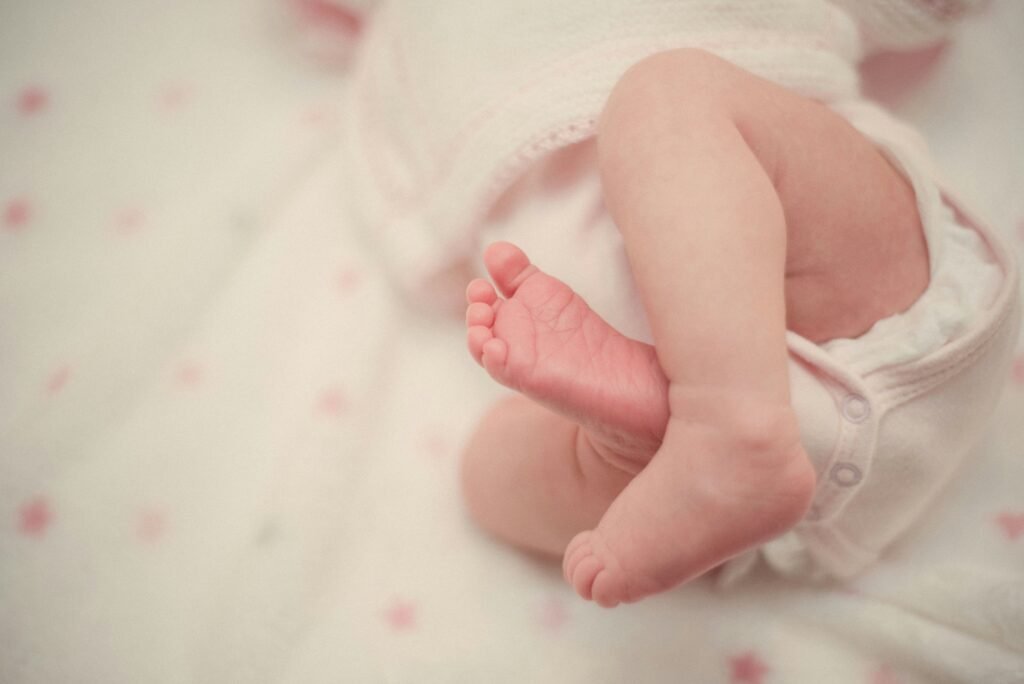
Focus your baby budget on true essentials that provide safety and comfort.
Smart Investments: Quality Where It Matters
While budgeting is important, certain items warrant spending a bit more for safety and longevity:
Convertible Crib
A convertible crib that transforms into a toddler bed and eventually a full-sized bed frame can save money long-term. Look for solid construction and certification from the Juvenile Products Manufacturers Association (JPMA).
- Converts from crib to toddler bed to full-sized bed
- Meets all current safety standards
- Adjustable mattress height as baby grows
Infant Car Seat
Never compromise on car seat safety. All car seats sold in the US must meet federal safety standards, so even budget-friendly options provide good protection. Focus on proper installation rather than premium features.
- Rear-facing design for infants
- 5-point harness system
- Easy installation features
Saving on Diapers and Feeding Essentials
Diapers and feeding supplies represent two of the largest recurring expenses in your baby budget. With strategic shopping, you can significantly reduce these costs without sacrificing quality.
Diaper Savings Strategies
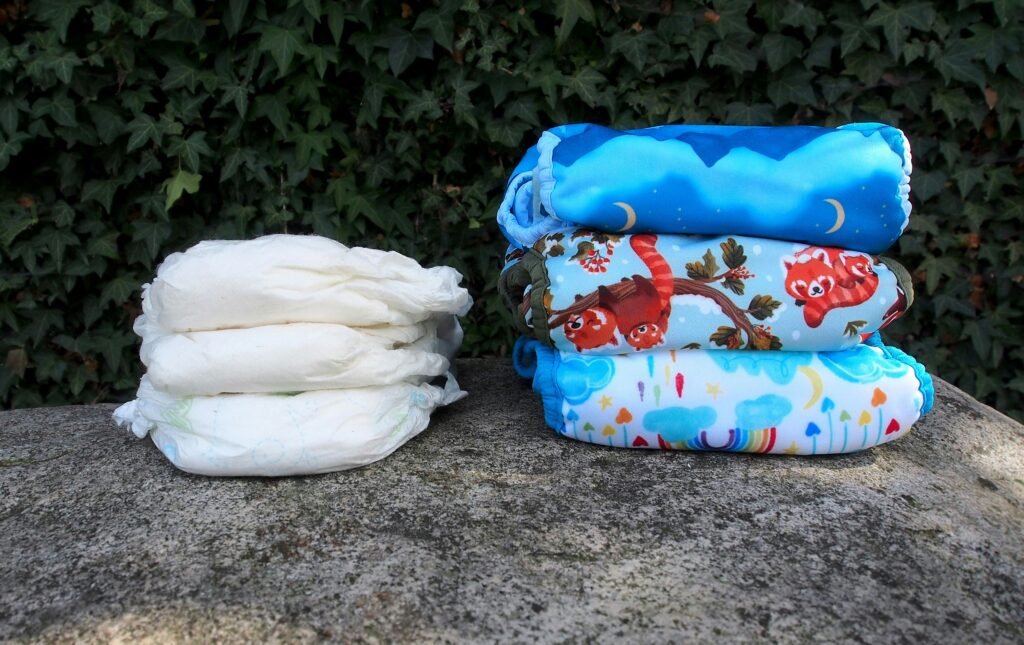
Diaper subscriptions and bulk purchases can save hundreds over your baby’s first year.
- Subscribe and save programs – Amazon Subscribe & Save offers up to 20% off diapers with regular deliveries
- Store brand diapers – Often manufactured in the same facilities as name brands but cost 15-40% less
- Bulk purchases – Buy larger boxes during sales and store for future use
- Diaper rewards programs – Join Pampers Club or Huggies Rewards to earn points toward free diapers
- Size up strategically – Moving to the next size slightly early can be more economical as larger sizes contain fewer diapers but often cost the same
Start Saving on Diapers Today
Set up a diaper subscription and never worry about running out while saving money every month.
Feeding Your Baby on a Budget
Breastfeeding Savings
If you choose to breastfeed, you can save approximately $1,500 in the first year compared to formula feeding. While breastfeeding is often described as “free,” consider these budget-friendly essentials:
- Breast pump (often covered by insurance under the ACA)
- Nursing bras (2-3 is sufficient)
- Nursing pads (reusable cloth options save money)
- Basic nursing pillow
Formula Feeding Savings
If formula feeding, these strategies can help manage costs:
- Store brand formulas (meet the same FDA standards as name brands)
- Sign up for formula company rewards programs
- Ask your pediatrician for samples
- Buy in bulk during sales
- Price match at Target or Walmart
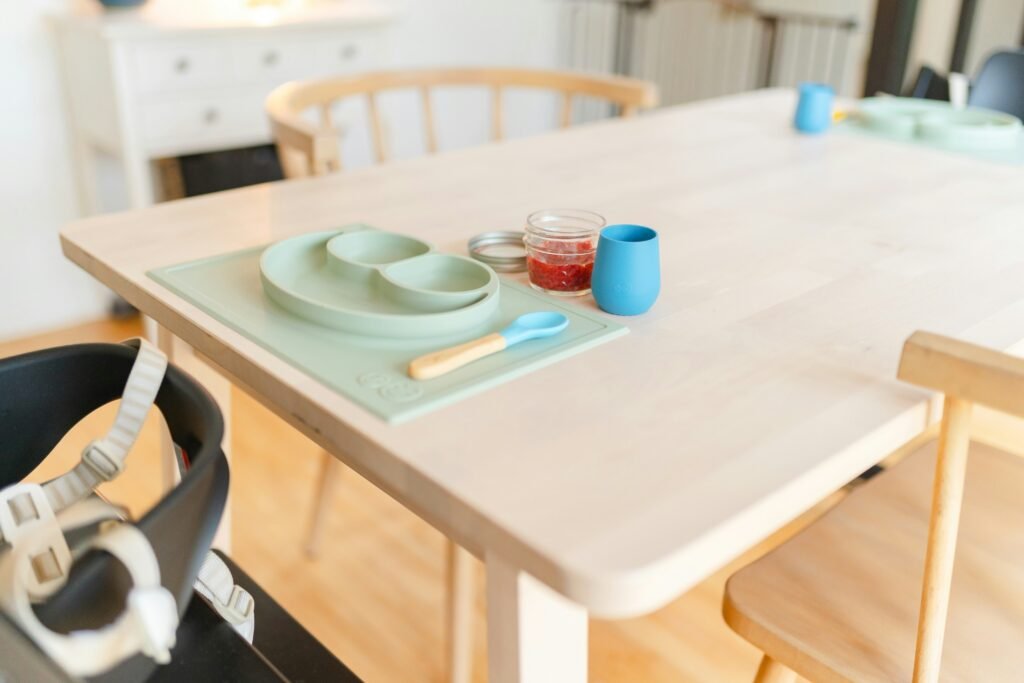
Making homemade baby food can save up to 70% compared to store-bought options.
Transitioning to Solid Foods
When your baby starts solid foods (around 6 months), making your own baby food can save significantly:
- Steam and puree regular fruits and vegetables
- Freeze portions in ice cube trays, then transfer to freezer bags
- Skip specialized baby food makers—a regular blender works fine
- Gradually introduce table foods in appropriate sizes to avoid buying special “toddler foods”
Feeding Essentials Starter Kit
These basic items are all you need to begin your baby’s feeding journey:
- Simple high chair or booster seat
- Silicone bibs with food catchers
- Basic set of baby spoons
- Small food storage containers
Buying Used or Borrowing: What’s Safe and What’s Not
Purchasing gently used baby items is one of the most effective ways to stay on budget. However, safety should always be your priority. Here’s guidance on what’s safe to buy used and what should always be purchased new.
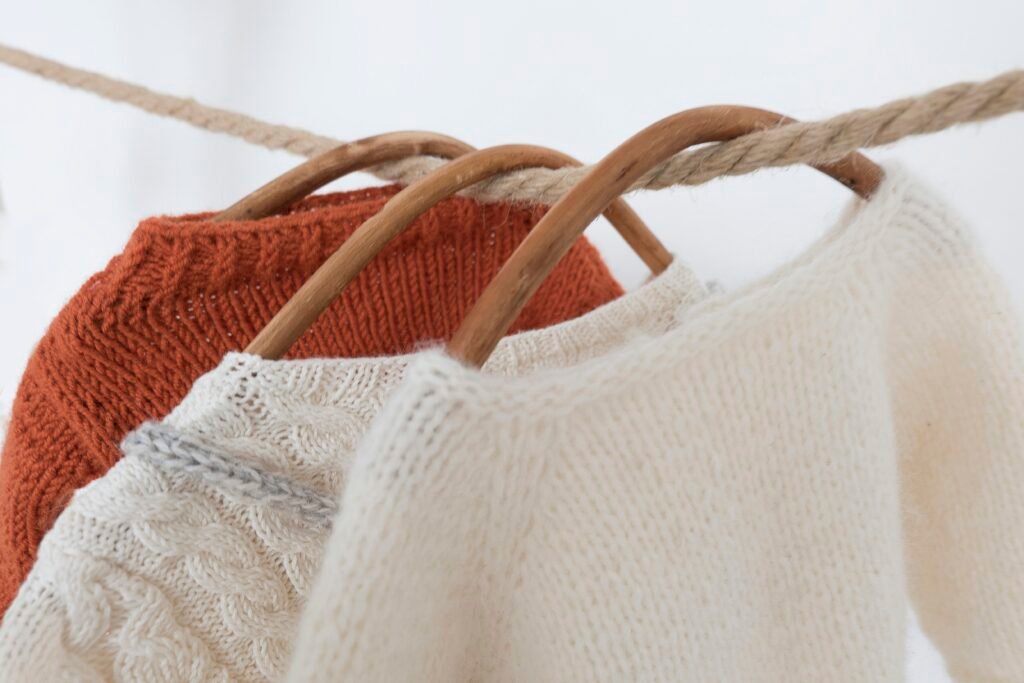
Children’s consignment stores offer quality used items at a fraction of retail prices.
Safe to Buy Used or Borrow
- Baby clothes – Babies outgrow clothes quickly, making used options practical
- High chairs – Easy to clean thoroughly
- Baby bathtubs – Simple to sanitize
- Changing tables – Basic furniture with no safety concerns
- Baby books – Can be wiped clean
- Solid wood furniture – Durable and easy to clean
- Strollers – Check for recalls and ensure all parts work properly
- Baby carriers/wraps – Wash thoroughly before use
Always Buy New
- Car seats – Safety technology changes; impossible to verify crash history
- Crib mattresses – Risk of bacteria and mold
- Breast pumps – Unless designed for multiple users
- Pacifiers and bottle nipples – Deteriorate with use
- Drop-side cribs – Banned since 2011 due to safety concerns
- Helmets – Previous damage may not be visible
- Older cribs – May not meet current safety standards
Safety Warning: Always check for recalls on any baby item, new or used, at CPSC.gov/Recalls. Never use a car seat that’s expired, been in an accident, or is missing its manufacturing label.
Where to Find Quality Used Baby Items
- Local consignment stores – Often inspect items before accepting them
- Facebook Marketplace – Wide selection but inspect carefully
- Neighborhood parent groups – Often have items from trusted sources
- Seasonal consignment sales – Large events with many items
- Thrift stores – Best for clothing and simple items
- Buy Nothing groups – Free items from your community
“We saved over $1,200 on our baby’s first-year expenses by buying gently used clothes, toys, and a high chair. The items were in such good condition, you’d never know they weren’t new.”
Maximizing Baby Registries and Freebies
Baby registries aren’t just for letting friends and family know what gifts you’d like—they can be powerful money-saving tools when used strategically.
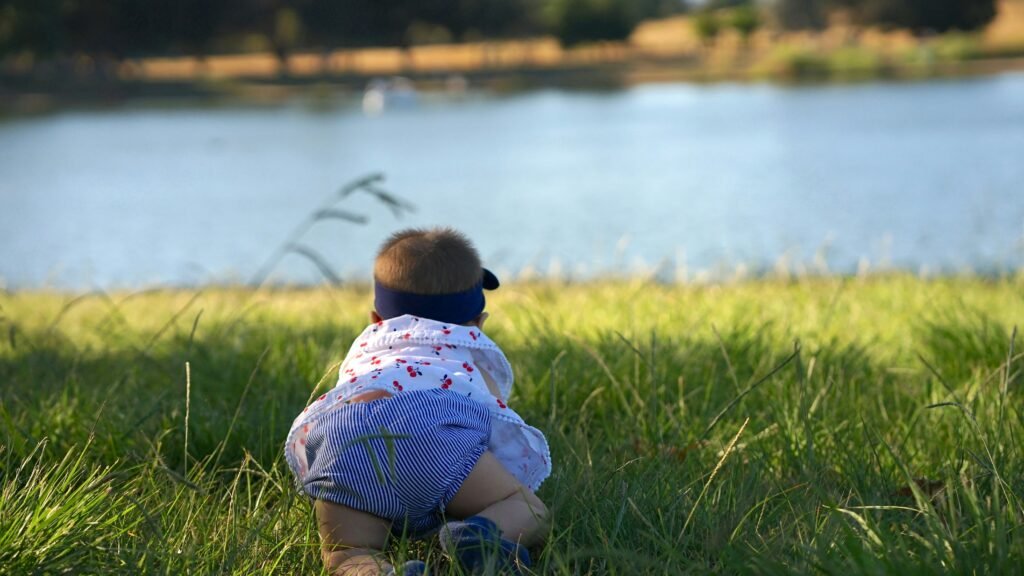
Free welcome boxes can contain over $100 worth of baby samples and coupons.
Registry Completion Discounts
Most major retailers offer a one-time discount on remaining registry items as your due date approaches:
| Retailer | Completion Discount | When Available | Special Notes |
| Amazon | 10-15% | 60 days before due date | 15% for Prime members |
| Target | 15% | 8 weeks before due date | Two uses allowed |
| Walmart | 10% | After baby’s arrival date | One-time use |
| Buy Buy Baby | 15% | 60 days before due date | Can be used multiple times |
Free Welcome Boxes and Kits
Many retailers and brands offer free baby welcome kits with samples and coupons:
- Amazon Welcome Box – Free with Prime membership and registry purchase
- Target Welcome Kit – Free when creating a registry in-store
- Walmart Welcome Box – Free with registry creation
- Buy Buy Baby Goody Bag – Available in-store with registry
- Enfamil Family Beginnings – Formula samples and coupons
- Similac StrongMoms – Formula samples and up to $400 in rewards
Start Your Baby Registry
Create a registry to receive free welcome boxes, completion discounts, and make it easy for friends and family to gift you items you actually need.
Strategic Registry Tips
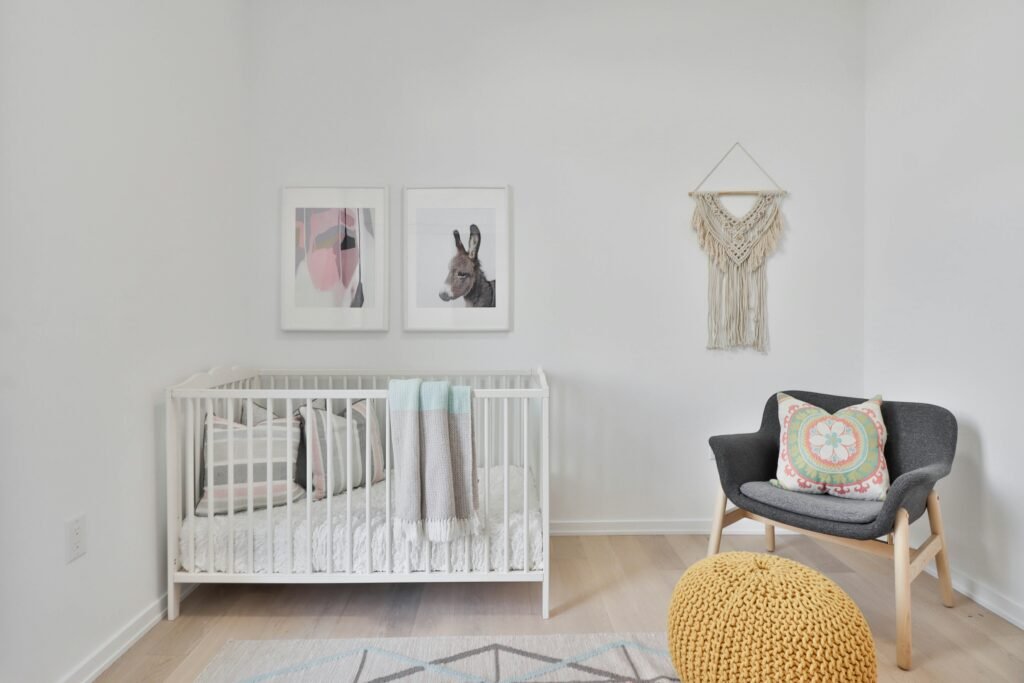
A well-planned registry focuses on needs rather than wants.
- Register for items at different price points – Give gift-givers options at various budgets
- Focus on essentials first – Prioritize must-haves over nice-to-haves
- Include group gift options – Allow multiple people to contribute to larger items
- Add seasonal items in advance – Register for size 6-month clothes if baby is due in summer but will need winter clothes later
- Use the completion discount strategically – Save big-ticket items for your completion discount purchase
- Consider diaper funds – Some registries allow people to contribute to a diaper fund
“We created registries at three different stores to maximize free welcome boxes and completion discounts. We received almost everything we needed as gifts, and used the completion discounts to purchase the remaining essentials at 15% off.”
Investing in Grow-With-Me Items
Some baby products are designed to adapt as your child grows, offering better long-term value than single-stage items. These “grow-with-me” products may cost more initially but save money over time by eliminating the need for replacements.
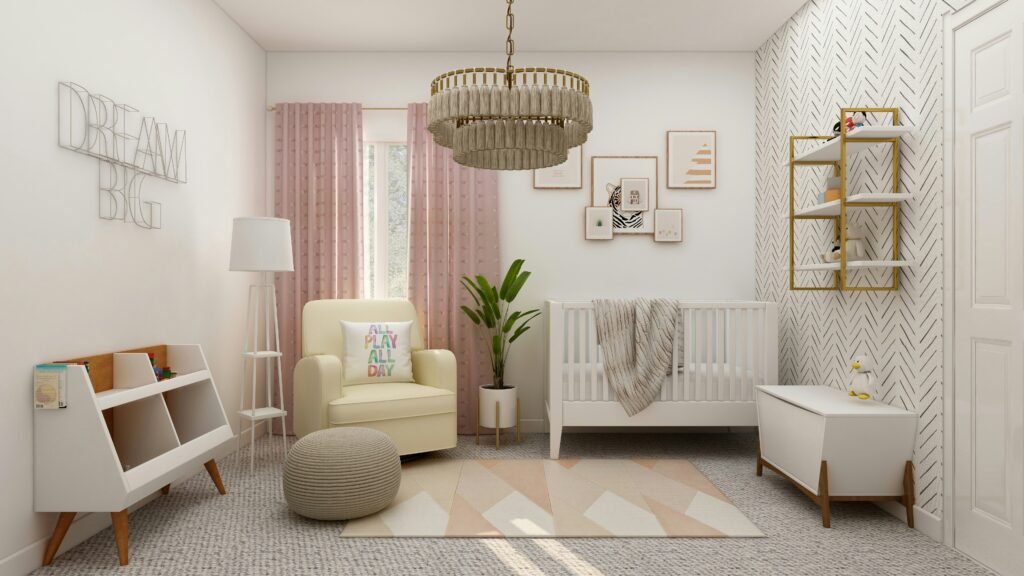
Convertible cribs can serve your child from infancy through the teen years.
Top Grow-With-Me Items Worth the Investment
4-in-1 Convertible Cribs
These cribs transform from a standard crib to a toddler bed, then to a daybed, and finally to a full-size bed frame. With a lifespan of potentially 15+ years, they offer excellent value.
Average cost: $150-$350
Potential savings: $300-$600 compared to buying separate beds
Convertible Car Seats
These seats adapt from rear-facing for infants to forward-facing for toddlers, and some convert to booster seats for older children. They eliminate the need to purchase multiple car seats as your child grows.
Average cost: $150-$300
Potential savings: $100-$250 compared to buying separate seats
Adjustable High Chairs
These high chairs adjust in height and configuration, transforming from infant high chairs to toddler booster seats and eventually to youth chairs that pull up to the table.
Average cost: $120-$200
Potential savings: $80-$150 compared to buying separate feeding seats
Other Smart Long-Term Investments
- Adjustable baby carriers – Work from newborn to toddler stages
- Convertible strollers – Adapt from infant to toddler configurations
- Expandable clothing – Items with adjustable features that fit longer
- Convertible play yards – Transform from bassinet to play space
- Adjustable baby gates – Expand to fit different doorways and spaces
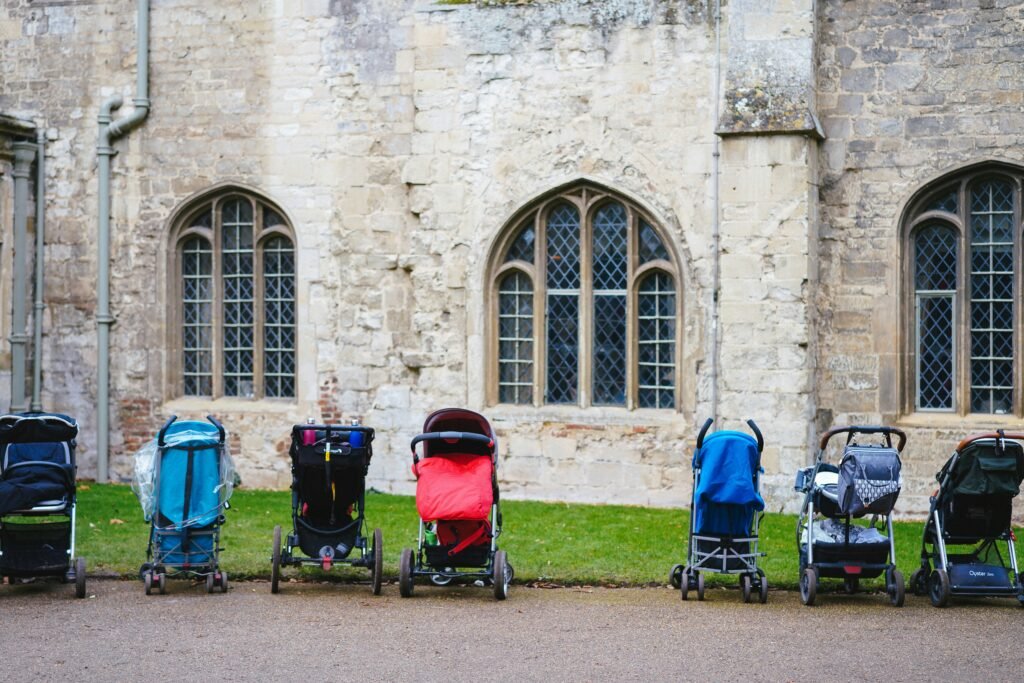
Adjustable carriers grow with your baby from newborn through toddlerhood.
Value Calculation Tip: When considering a grow-with-me item, divide its cost by the number of years you expect to use it. Compare this annual cost to buying separate items for each stage to determine if it’s truly a good value for your situation.
Managing Child Care Costs on a Budget
Child care often represents the largest expense in a family’s baby budget, sometimes exceeding housing costs. The average cost for infant care ranges from $10,000 to $16,000 annually, depending on your location and the type of care.
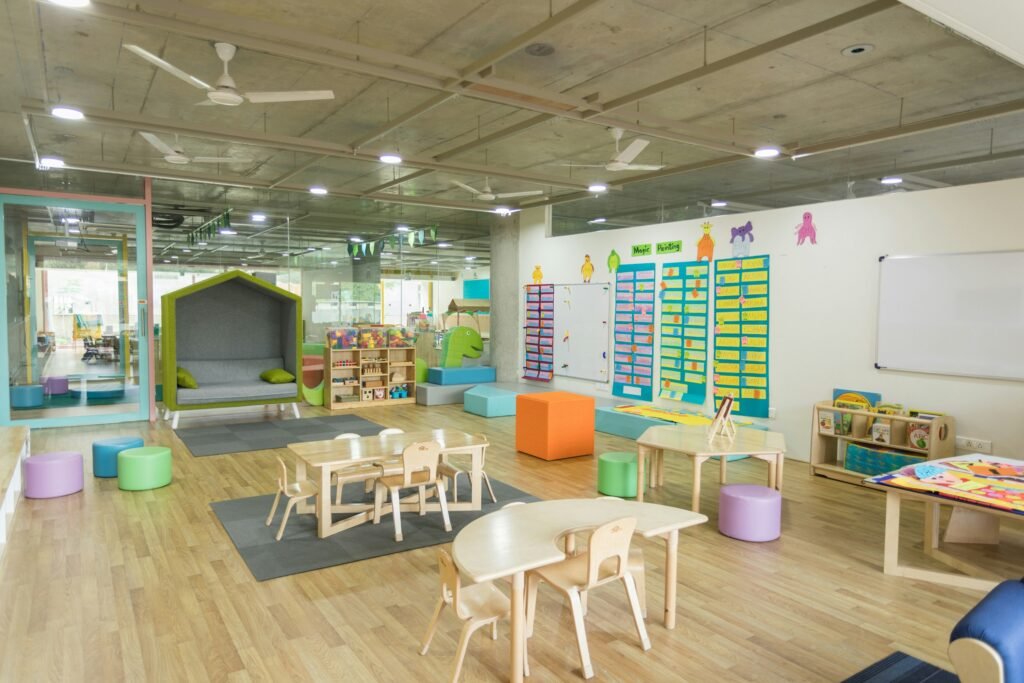
Researching all child care options can reveal significant cost differences.
Child Care Options and Cost Comparison
| Type of Care | Average Monthly Cost | Pros | Cons |
| Daycare Center | $1,000-$2,000 | Structured environment, socialization, regulated | Less flexible hours, exposure to illnesses |
| In-Home Daycare | $800-$1,200 | More affordable, home environment, smaller groups | Variable quality, less oversight |
| Nanny | $2,500-$3,500 | One-on-one care, convenience, flexibility | Most expensive option, employer responsibilities |
| Nanny Share | $1,200-$1,800 | Split costs, socialization, in-home care | Coordination with other family, potential conflicts |
| Family Member | $0-$800 | Most affordable, trusted care, flexibility | Potential relationship strain, reliability concerns |
Strategies to Reduce Child Care Costs
- Flexible work arrangements – Negotiate remote work, flexible hours, or compressed workweeks
- Staggered parent schedules – Arrange work schedules to minimize overlap and child care needs
- Child care cooperatives – Form a group with other parents to share child care responsibilities
- Part-time options – Consider part-time care combined with other arrangements
- Workplace benefits – Utilize dependent care FSAs to save on taxes
- Child care subsidies – Research state and local programs for income-eligible families
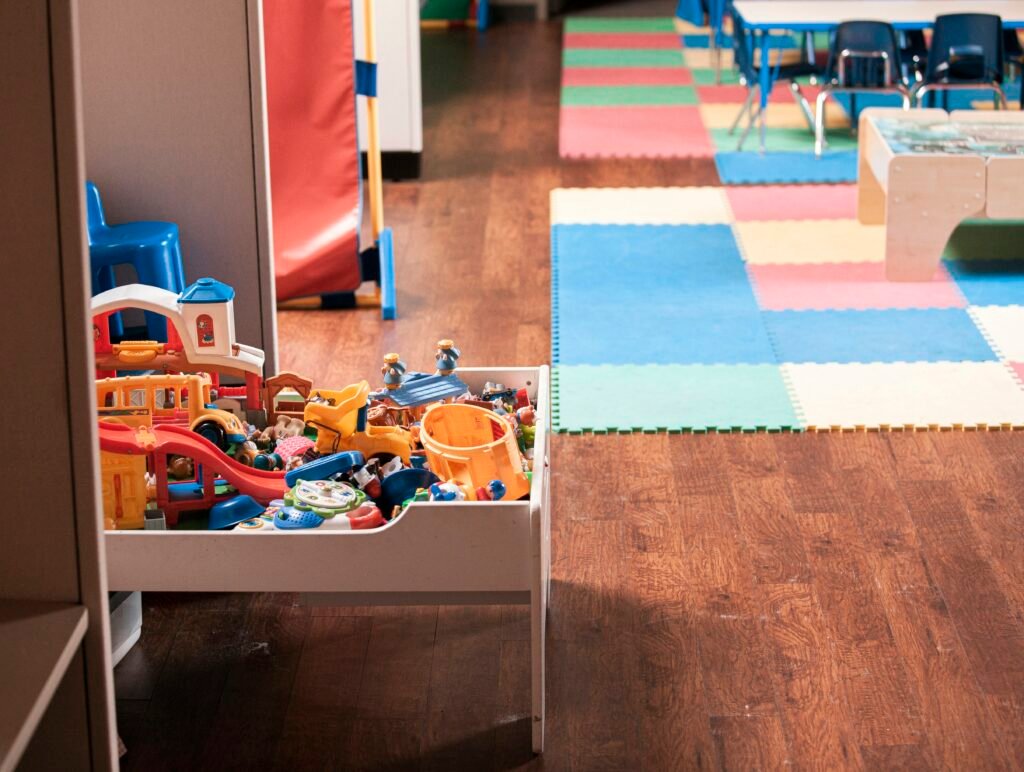
Flexible work arrangements can significantly reduce child care expenses.
Tax Benefits for Child Care Expenses
Don’t overlook valuable tax benefits that can offset some of your child care costs:
- Child and Dependent Care Credit – Tax credit of up to $4,000 for one child or $8,000 for two or more
- Dependent Care FSA – Set aside up to $5,000 pre-tax for child care expenses
- Child Tax Credit – Credit of up to $2,000 per qualifying child
Resource Tip: Contact your local Child Care Resource and Referral agency for help finding quality, affordable child care options in your area. Visit ChildCareAware.org to find your local agency.
Embracing Parenthood on a Budget
Creating a baby budget isn’t about depriving your child of necessities or experiences—it’s about making thoughtful choices that align with your financial reality while providing everything your baby truly needs.
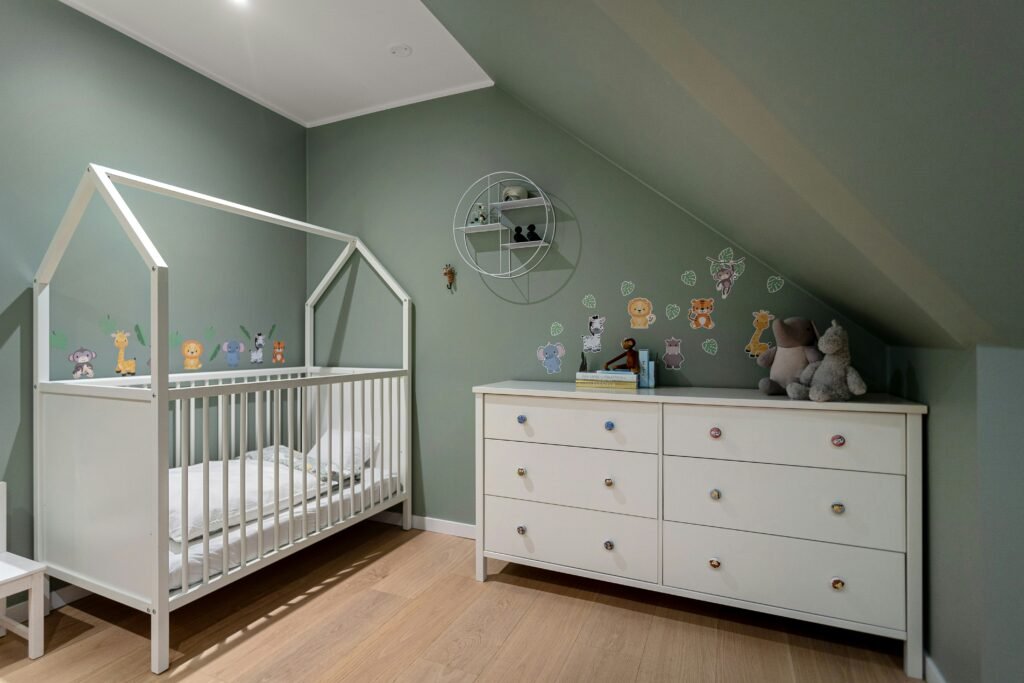
What babies need most—love, attention, and care—doesn’t cost anything at all.
Key Takeaways for Your Baby Budget Journey
- Start planning early – Create your budget before baby arrives
- Distinguish needs from wants – Focus spending on true essentials
- Embrace secondhand options – Save significantly on gently used items
- Leverage registries strategically – Maximize free welcome kits and completion discounts
- Think long-term – Invest in convertible items that grow with your child
- Be creative with child care – Explore all options to find affordable solutions
- Remember what matters most – Your baby needs your love and attention more than any material item
“The best things we’ve given our daughter didn’t come from a store. The walks in the park, the songs we sing, the books we read together—these are the things she loves most, and they cost little to nothing.”
Parenthood brings countless joys and challenges, and financial stress shouldn’t overshadow this special time. By implementing the strategies in this guide, you can create a sustainable baby budget that works for your family’s unique situation while giving your baby everything they need to thrive.
Remember that every family’s circumstances are different—what works for one may not work for another. Be flexible with your budget, adjust as needed, and focus on what matters most: creating a loving, secure environment for your growing family.
Start Your Baby Budget Today
Create your baby registry, explore our recommended products, and begin your journey to financial confidence as a new parent.

